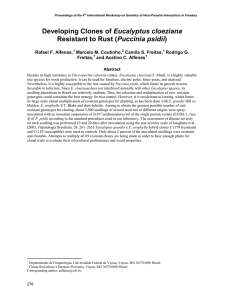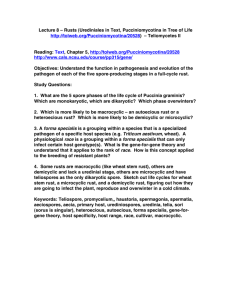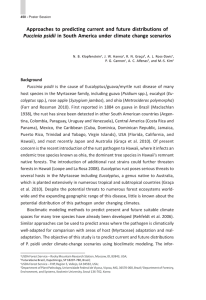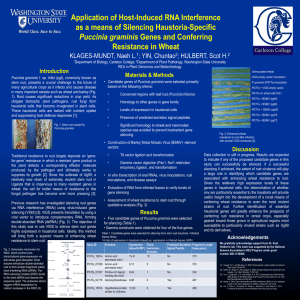Discovery of genetic markers for resistance to infection
advertisement
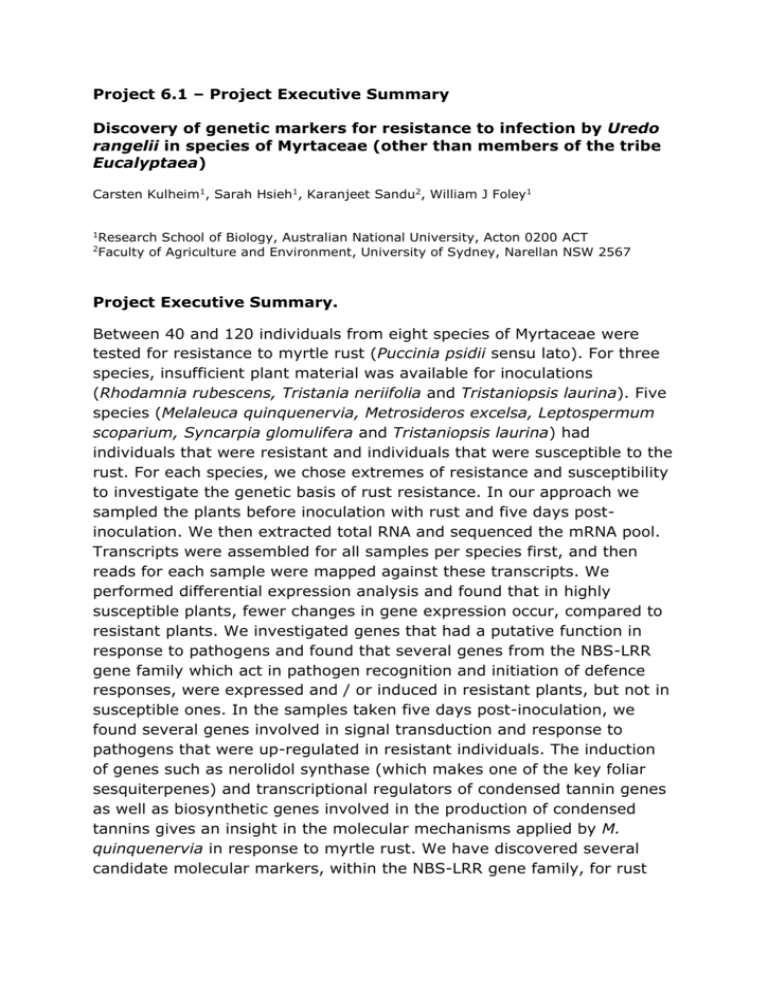
Project 6.1 – Project Executive Summary Discovery of genetic markers for resistance to infection by Uredo rangelii in species of Myrtaceae (other than members of the tribe Eucalyptaea) Carsten Kulheim1, Sarah Hsieh1, Karanjeet Sandu2, William J Foley1 Research School of Biology, Australian National University, Acton 0200 ACT Faculty of Agriculture and Environment, University of Sydney, Narellan NSW 2567 1 2 Project Executive Summary. Between 40 and 120 individuals from eight species of Myrtaceae were tested for resistance to myrtle rust (Puccinia psidii sensu lato). For three species, insufficient plant material was available for inoculations (Rhodamnia rubescens, Tristania neriifolia and Tristaniopsis laurina). Five species (Melaleuca quinquenervia, Metrosideros excelsa, Leptospermum scoparium, Syncarpia glomulifera and Tristaniopsis laurina) had individuals that were resistant and individuals that were susceptible to the rust. For each species, we chose extremes of resistance and susceptibility to investigate the genetic basis of rust resistance. In our approach we sampled the plants before inoculation with rust and five days postinoculation. We then extracted total RNA and sequenced the mRNA pool. Transcripts were assembled for all samples per species first, and then reads for each sample were mapped against these transcripts. We performed differential expression analysis and found that in highly susceptible plants, fewer changes in gene expression occur, compared to resistant plants. We investigated genes that had a putative function in response to pathogens and found that several genes from the NBS-LRR gene family which act in pathogen recognition and initiation of defence responses, were expressed and / or induced in resistant plants, but not in susceptible ones. In the samples taken five days post-inoculation, we found several genes involved in signal transduction and response to pathogens that were up-regulated in resistant individuals. The induction of genes such as nerolidol synthase (which makes one of the key foliar sesquiterpenes) and transcriptional regulators of condensed tannin genes as well as biosynthetic genes involved in the production of condensed tannins gives an insight in the molecular mechanisms applied by M. quinquenervia in response to myrtle rust. We have discovered several candidate molecular markers, within the NBS-LRR gene family, for rust resistance that need to be verified before they can be applied for breeding programmes in the future. The Final Report for this project is not available as manuscripts describing this work are in preparation. For further information, please contact Lead Researcher Dr Carsten carsten.kulheim@anu.edu.au

